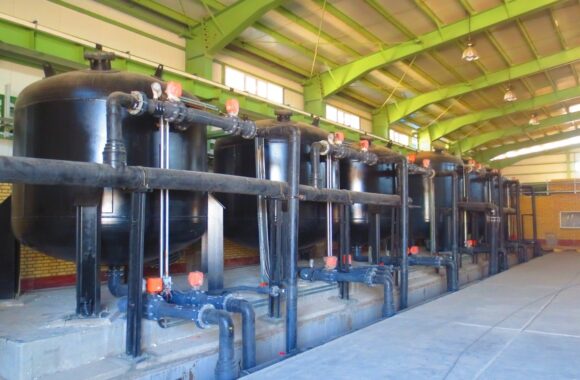Dual Filters
Dual Filters
Dual Filters
Dual filters, consisting of sand and carbon filters, are commonly used in water treatment processes. The sand filter is employed to remove suspended solids with a diameter of up to 50 microns, reducing the turbidity of the water. On the other hand, the carbon filter is used to eliminate taste, odor, color, organic matter, and free chlorine. One of the oldest methods is the use of settling basins, but one of the most practical purification methods is filtration with sand filters (rapid and slow), which is generally versatile for separating suspended particles. In the carbon filter, water passes through a bed of activated carbon granules, where color and odor are absorbed by the carbon, resulting in an output water free from any taste, odor, and color. Carbon filters are typically placed after sand filters in the water treatment process. The body of sand and carbon filters can be made of stainless steel, FRP (Fiberglass Reinforced Plastic), or epoxy-coated carbon steel, and they are filled with different grades of silica or activated carbon particles.
. These filters need periodic backwashing based on the concentration of solid materials present in the water. The backwashing process can be done manually, semi-automatically, or automatically.
Pre-treatment systems for reverse osmosis (RO) systems and wastewater treatment are used for various applications, including:
- Separation of suspended particles and reduction of turbidity.
- Filtration of boiler water and cooling towers.
- Pressure tolerance up to 10 bar.
- Body made of stainless steel, fiberglass reinforced plastic (FRP), or carbon steel.
- Available with manual, semi-automatic, and fully automatic valves for backwashing.
- Equipped with an air release valve and pressure gauge.
- Utilization of multi-layer graded silica sand in sand filters.
- Use of high-quality activated carbon in carbon filters.

